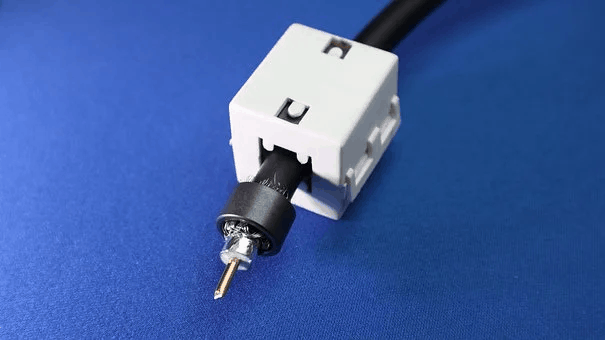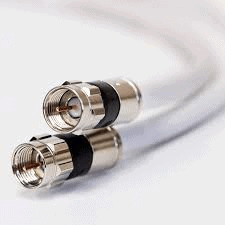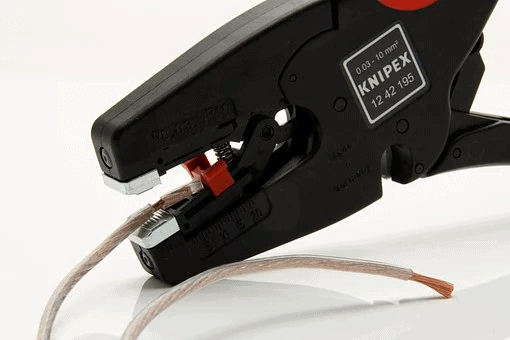Also known as coax, coaxial is nothing but a cable. It is largely used by internet providers and telecommunication companies.
The main reason is that it is a highly effective wiring option for transferring information from both video applications and audio devices.
The USP of standard coaxial cables is its shield design. And that's why in the present day, it has become a reliable and accurate medium of data transmission.
However, coaxial is far behind the likes of fiber optics and other 21st century mediums of data transmission. Nonetheless, people using them at homes as speaker cables have proved to be largely beneficial.
Want to find out how you can use coaxial as a speaker cable? Read on:
Can you use a coaxial as a speaker cable? And how?

The answer to this question is yes. But be informed that it is not that efficient process.
The most basic step of using a coaxial as a speaker cable involves the removal of the standard F-connectors. Only when you replace them with RCA ends, then you can make use out of them.
You will get the best results with coaxial cables if you use them with powered subwoofers.
Problems with coaxial cables
Impedance can be a concerning issue. Since coaxial cable setups have higher resistance, you cannot drive too much load into the speakers.
The risk of blowing out your speakers is heavily involved. In fact, the longer the cable, the riskier is the entire setup. Thus it is always recommended to keep the length of the coaxial cable as short as possible while connecting equipment.
Steps to change the coaxial cable into a speaker cable

Removing the standard F-type connectors
As discussed earlier, this is the basic step for converting coaxials into speaker cables.
Ideally, coaxial cables feature dual connections. Its common function includes routing video signals from the television to the set-top box input.
The connectors have threading in the interior wall. You have to screw them in order to get a secure connection. But when you want to use them as speaker cables, you'll have to take them off.
Here's how you do it. Take a sharp knife and cut the connectors from the cable. In case the thickness of the coaxial cable is an issue due to extra shielding, you can always use wire cutters.
Measuring the length of the cable
The standard length of a coaxial cable is 6-feet. But you may not need such a long cable for connecting your speakers.
You have to be careful while measuring how long you want the cable to be. As we talked about it earlier, length has a direct link to how risky or safe the coaxial cable setup is.
You can use a string to determine the dimensions – from your amplifier to the location where you will place the speakers.
It is always safe to measure the length twice before you cut down the cable. You can have a couple of feet extra to make sure you don't run out of wire while connecting the speakers.
Stripping the cable jacke

Using a ringing tool is the best and quickest way of stripping the insulation of the coaxial cable. Adjust the blade depth in accordance with the thickness of the jacket.
By doing so, you will prevent any chance of damaging the wire.
After you open the jaw of the ringing tool, place the coaxial cable into the notch. Then gently release the jaws and start rotating the ringing tool several times. The jacket will come off in a jiffy.
Now keep in mind that all ringing tools are not made for coaxial cables. Do check the instructions of the tool before using it on the cable. Otherwise, you will end up ruining both the cable and the tool.
In case you don't have access to a ringing tool, a sharp knife can do the trick as well. Of course, it involves extra cautiousness.
Unbraiding the cable shielding
Once you are done stripping the cable jacket, you have to remove the braided shield. This shield is designed to protect the wire underneath it.
If you manage to unbraid the woven copper wire without damaging it, you can easily use it to wire your speakers.
The idea is to unwind the wire shielding as slowly and gently as possible. The resultant should be one long strand of copper. This is what you have to use for setting your audio setup.
Removing the insulator
Now it's time to get rid of the insulator. The braid shielding covers a translucent insulation layer. This layer protects the main signal conductor.
Use a wire stripper to remove this insulation and you will get to the core of the wire.
You have to keep repeating these steps until and unless you have a long enough core wire or braided strand to connect your speakers to the amplifier.
By-pass step
If you do not wish to follow the tedious 5-step process, there is one alternative bonus step that can get the job done in a single go.
You just need to cut and strip about 1.5-inches of the shield, jacket, and insulation of the coaxial cable. The core wire will be exposed at each end of the coaxial.
By taking the bonus step, you will leave the rest of the table untouched. By just exposing the core wire at the end, you are reducing a significant amount of work.
With that being said, there are a few downsides to this process. Firstly, as you are only stripping the ends of the coaxial, there will be a lack of flexibility, unlike the bare wire.
This may be a time-saving method but you may not be 100% satisfied with the results.
Steps for connecting speakers using coaxial cables

Now that you are done deconstructing your coaxial cables, let's show you how to connect your speakers using it.
You should have the core wire and the braids to work with.
Firstly, place the core wire into the red connector of the speaker. Do it similarly for the other end of the core wire and place it to the red connector of the amplifier.
On a standard speaker, the braided end will go into the black connector. Likewise, its other end will go into the same colored connector of the amplifier.
Remember, the core wire is for all positive connections while the braided wire is for all negative connections.
This is all the wiring you need to do. Turn on the amplifier and speakers and check if the sound is coming.
Coaxial cables work impressively with smaller audio systems. Sometimes even better than the wires that come with the unit.
Although, don't go for coaxials if you have a premium or high-end audio system. It will greatly deteriorate the quality of the audio output.
Conclusion
So the next time you need to connect speakers and you have a pair of coaxial cables lying around, you know what to do.
By now, you are very well aware of the limitations and drawbacks of coaxial cables.
The connection will be as good as your cable conversion process. Also, the type of audio system and speakers have a lot to do with it.
They may not be like the conventional speaker cables but they manage to get the job done.
So the next time someone asks if you can use coaxial as a speaker cable, you have the answer!

